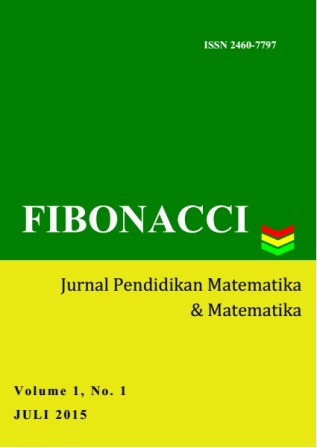PENGARUH PENDEKATAN PENDIDIKAN MATEMATIKA REALISTIK BERBANTUAN BAHAN MANIPULATIF TERHADAP MOTIVASI BELAJAR MATEMATIKA
Main Article Content
Abstract
Article Details
Authors who publish with this journal agree to the following terms:
- Authors retain copyright and grant the journal right of first publication with the work simultaneously licensed under a Creative Commons Attribution License that allows others to share the work with an acknowledgement of the work's authorship and initial publication in this journal.
- Authors are able to enter into separate, additional contractual arrangements for the non-exclusive distribution of the journal's published version of the work (e.g., post it to an institutional repository or publish it in a book), with an acknowledgement of its initial publication in this journal.
- Authors are permitted and encouraged to post their work online (e.g., in institutional repositories or on their website) prior to and during the submission process, as it can lead to productive exchanges, as well as earlier and greater citation of published work (See The Effect of Open Access).
References
Agus Suprijono. (2009). Cooperatif Learning Teori dan Aplikasinya. Yogyakata:
Pustaka Pelajar.
Budiyono. (2003). Metodologi Penelitian Pendidikan. Surakarta: UNS press.
Budiyono. (2009). Statistika Untuk Penelitian. Surakarta: UNS press.
Budiyono. (2011). Penilaian Hasil Belajar. Surakarta: UNS press.
Dimyati dan Mudjiono. (2009). Belajar dan Pembelajaran. Jakarta: Rieneka Cipta.
Hadi, Sutarto. (2005). Pendidikan Matematika Realistik. Banjarmasin: Tulip.
Lam, S. F., Cheng, R. W., dan Ma, W. Y. K. (2008). “Teacher and Student Intrinsic
Motivation”. Springer Science: Business Media B.V. Vol. 37, hal: 365-578.
Muhsetyo, Gatot dkk. (2007). Pembelajaran Matematika SD. Jakarta : Universitas
Terbuka.
Sudjana, Nana. (2011). Penilaian Hasil Proses Belajar Mengajar. Bandung: Remaja
Rosdakarya.
Sugiyono. (2008). Model Penelitian Kuantitatif, Kualitatif dan R & D. Bandung:
Alfbeta.
Yunus, A. S. M. (2009). “Motivation in the Learning of Mathematics”. European
Journal of Social Sciences. Vol. 7, hal: 93–101.

